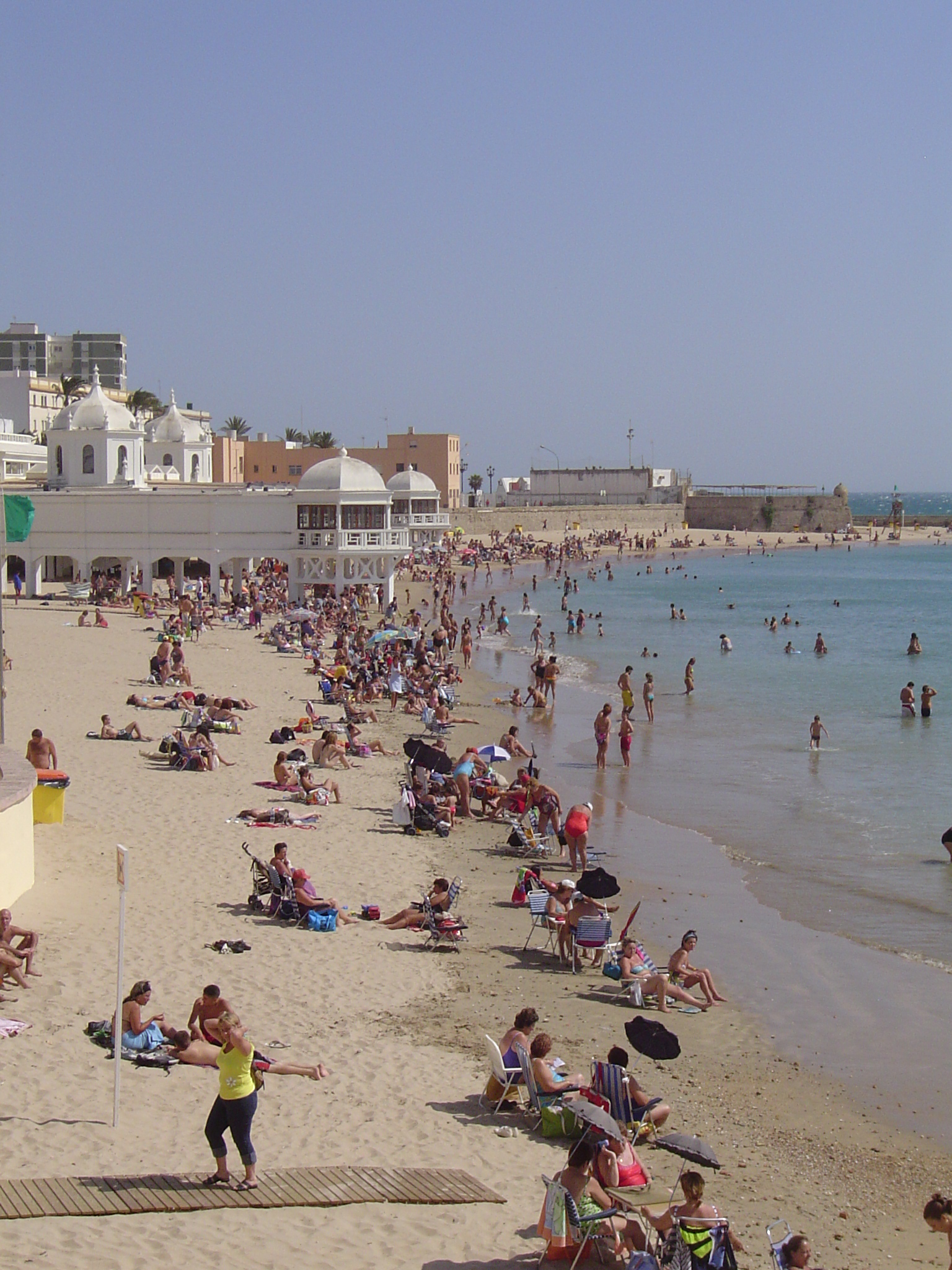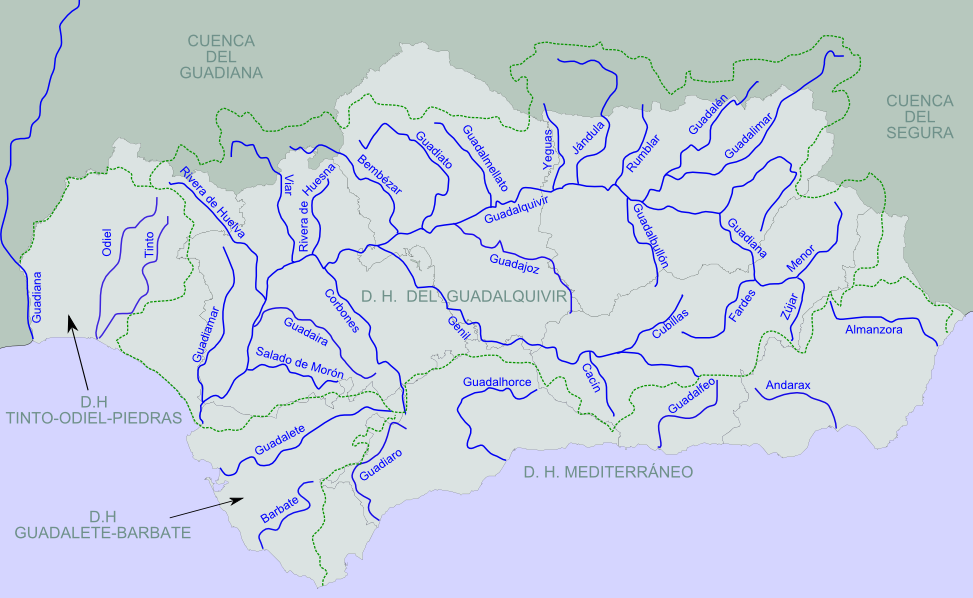|
Autovía A-49
The Autovía A-49https://www.boe.es/boe/dias/2015/09/30/pdfs/BOE-A-2015-10439.pdf is a major highway in Andalusia, Spain. It starts on the ring road of Seville and heads west with a spur south A-483 to Almonte, the Costa de la Luz and the Doñana National Park. The road crosses the Rio Tinto and the Odiel river north of Huelva and ends on the Portugal–Spain border 133 km west of Seville where it connects to the A22 motorway (Portugal) on the Guadiana International Bridge over the Guadiana River The Guadiana River (, also , , ), or Odiana, is an international river defining a long stretch of the Portugal-Spain border, separating Extremadura and Andalusia (Spain) from Alentejo and Algarve (Portugal). The river's basin extends from the e .... It is also European route E1. References External links From Spain A-49 to Portugal A-22 {{DEFAULTSORT:Autovia A-49 A-49 A-49 ... [...More Info...] [...Related Items...] OR: [Wikipedia] [Google] [Baidu] |
Portugal–Spain Border
The Portugal–Spain border, also referred to as "The Stripe" ( es, La Raya, pt, A Raia, gl, A Raia, mwl, La Raia), is one of the oldest borders in the world. The current demarcation is almost identical to that defined in 1297 by the Treaty of Alcañices. The Portugal–Spain border is long, and is the longest uninterrupted border within the European Union, being free of border control since March 26, 1995 (the effective date of the Schengen Agreement), with the exception of a brief period during the COVID-19 pandemic. The border is not defined for between the Caia river and Ribeira de Cuncos, because of the disputed status of Olivenza/Olivença, which has been disputed between the two countries for two hundred years. A microstate existed previously on the border called Couto Misto. Bordering districts and provinces Districts on the Portuguese side of the border from North to South: * Viana do Castelo District (Northern Portugal) * Braga District (Northern Portugal) * ... [...More Info...] [...Related Items...] OR: [Wikipedia] [Google] [Baidu] |
Andalusia
Andalusia (, ; es, Andalucía ) is the southernmost Autonomous communities of Spain, autonomous community in Peninsular Spain. It is the most populous and the second-largest autonomous community in the country. It is officially recognised as a Nationalities and regions of Spain, "historical nationality". The territory is divided into eight Provinces of Spain, provinces: Province of Almería, Almería, Province of Cádiz, Cádiz, Province of Córdoba (Spain), Córdoba, Province of Granada, Granada, Province of Huelva, Huelva, Province of Jaén (Spain), Jaén, Province of Málaga, Málaga, and Province of Seville, Seville. Its capital city is Seville. The seat of the High Court of Justice of Andalusia is located in the city of Granada. Andalusia is located in the south of the Iberian Peninsula, in southwestern Europe, immediately south of the autonomous communities of Extremadura and Castilla-La Mancha; west of the autonomous community of Region of Murcia, Murcia and the Mediterr ... [...More Info...] [...Related Items...] OR: [Wikipedia] [Google] [Baidu] |
Spain
, image_flag = Bandera de España.svg , image_coat = Escudo de España (mazonado).svg , national_motto = ''Plus ultra'' (Latin)(English: "Further Beyond") , national_anthem = (English: "Royal March") , image_map = , map_caption = , image_map2 = , capital = Madrid , coordinates = , largest_city = Madrid , languages_type = Official language , languages = Spanish language, Spanish , ethnic_groups = , ethnic_groups_year = , ethnic_groups_ref = , religion = , religion_ref = , religion_year = 2020 , demonym = , government_type = Unitary state, Unitary Parliamentary system, parliamentary constitutional monarchy , leader_title1 = Monarchy of Spain, Monarch , leader_name1 = Felipe VI , leader_title2 = Prime Minister of Spain ... [...More Info...] [...Related Items...] OR: [Wikipedia] [Google] [Baidu] |
Seville
Seville (; es, Sevilla, ) is the capital and largest city of the Spanish autonomous community of Andalusia and the province of Seville. It is situated on the lower reaches of the River Guadalquivir, in the southwest of the Iberian Peninsula. Seville has a municipal population of about 685,000 , and a metropolitan population of about 1.5 million, making it the largest city in Andalusia, the fourth-largest city in Spain and the 26th most populous municipality in the European Union. Its old town, with an area of , contains three UNESCO World Heritage Sites: the Alcázar palace complex, the Cathedral and the General Archive of the Indies. The Seville harbour, located about from the Atlantic Ocean, is the only river port in Spain. The capital of Andalusia features hot temperatures in the summer, with daily maximums routinely above in July and August. Seville was founded as the Roman city of . Known as ''Ishbiliyah'' after the Islamic conquest in 711, Seville became ... [...More Info...] [...Related Items...] OR: [Wikipedia] [Google] [Baidu] |
Costa De La Luz
The Costa de la Luz (, "Coast of Light") is a section of the Andalusian coast in Spain facing the Atlantic. It extends from Tarifa in the south, along the coasts of the Province of Cádiz and the Province of Huelva, to the mouth of the Guadiana River. A holiday destination for vacationing Spaniards, in recent years the Costa de la Luz has seen more foreign visitors, especially from France and Germany. Increasing urbanization and tourism-oriented development of parts of the coast have had economic benefits. Attractions and recreation Aside from the beaches and the sunshine, there are ample opportunities and facilities for leisure activities, like fine dining, golf, kitesurfing, boating, and other water sports. The Costa de la Luz has protected natural reserves and a number of natural attractions. Among them are the Doñana National Park, where endangered species, such as the Spanish imperial eagle and the Iberian lynx (''Felis pardina''), can occasionally be sighted; the Bay ... [...More Info...] [...Related Items...] OR: [Wikipedia] [Google] [Baidu] |
Doñana National Park
Doñana National Park or Parque Nacional y Natural de Doñana is a natural reserve in Andalucía, southern Spain, in the provinces of Huelva (most of its territory), Cádiz and Seville. It covers , of which are a protected area. The park is an area of marshes, shallow streams, and sand dunes in Las Marismas, the delta where the Guadalquivir River flows into the Atlantic Ocean. It was established as a nature reserve in 1969 when the World Wildlife Fund joined with the Spanish government and purchased a section of marshes to protect it. The eco-system has been under constant threat by the draining of the marshes, the use of river water to boost agricultural production by irrigating land along the coast, water pollution by upriver mining, and the expansion of tourist facilities. It is named after wife of the 7th Duke of Medina Sidonia. Doñana National Park has a biodiversity that is unique in Europe, although there are some similarities to the Parc Naturel Régional de Camargu ... [...More Info...] [...Related Items...] OR: [Wikipedia] [Google] [Baidu] |
Rio Tinto (river)
The Río Tinto (, ''red river'' or Tinto River) is a river in southwestern Spain that rises in the Sierra Morena mountains of Andalusia. It flows generally south-southwest, reaching the Gulf of Cádiz at Huelva. The Rio Tinto river has a unique red and orange colour derived from its chemical makeup that is extremely acidic and with very high levels of iron and heavy metals. The river maintains its colour for an approximate length of 50 kilometres. After the 50 kilometre mark, the chemistry that makes the Rio Tinto river so unique appears to slowly decline, as does the odd colouring. The location where the chemistry of the river is altered is near a town called Niebla. The river's chemistry begins to significantly change following the town of Niebla owing to the fact that the Rio Tinto blends itself with other streams that are connected to the Atlantic Ocean. The river is approximately long and is located within the Iberian Pyrite Belt. This area has large amounts of ore and sul ... [...More Info...] [...Related Items...] OR: [Wikipedia] [Google] [Baidu] |
Odiel
The Odiel ( es, Río Odiel) is a river in the Atlantic basin in southern Spain, more precisely in the province of Huelva, Andalusia. It originates at Marimateos in the Sierra de Aracena at an elevation of above sea level. At the Punta del Sebo, it joins the Rio Tinto to form the Huelva Estuary. Its principal tributaries are the Escalada, Meca, Olivargas, Oraque, Santa Eulalia, and El Villar. Its basin covers . In Roman times it was known as the ''Urius'', although some scholars have proposed to identify the Odiel with another ancient name normally associated with the Río Tinto (''Luxia''). Even before the Romans, its mouth was an important place of commerce, as can be seen by archaeological remnants from Phoenicians and Ancient Greeks, known as the "Huelva Estuary Deposit" ( es, Depósito de la Ría de Huelva), dated 1000 BCE Common Era (CE) and Before the Common Era (BCE) are year notations for the Gregorian calendar (and its predecessor, the Julian calendar), the worl ... [...More Info...] [...Related Items...] OR: [Wikipedia] [Google] [Baidu] |
Huelva
Huelva (, ) is a city in southwestern Spain, the capital of the province of Huelva in the autonomous community of Andalusia. It is between two short rias though has an outlying spur including nature reserve on the Gulf of Cádiz coast. The rias are of the Odiel and Tinto rivers and are good natural harbors. According to the 2010 census, the city had a population of 149,410. Huelva is home to Recreativo de Huelva, the oldest football club in Spain. While the existence of a pre-Phoenician settlement within the current urban limits since circa 1250 BC has been tentatively defended by scholars, Phoenicians established a stable colony roughly by the 9th century BC. History Protohistory At least up to the 1980s and 1990s, the mainstream view was that Huelva at first was an autochthonous Tartessian settlement (even the very same Tartessos mentioned in Greek sources) yet some later views tended to rather stress a pluri-ethnic enclave mixing natives with peoples with a mainly Phoenici ... [...More Info...] [...Related Items...] OR: [Wikipedia] [Google] [Baidu] |
A22 Motorway (Portugal)
The A22 ( pt, Via do Infante de Sagres) is the principal motorway (freeway) in the Algarve, Portugal. Named after Henry the Navigator, it connects Lagos to Castro Marim and connects to the A-49 Motorway (Spain) on the Guadiana International Bridge over the Guadiana River. It is also part of European route E01 European route E1 is a series of roads in Europe, part of the United Nations International E-road network, running from Larne, Northern Ireland to Seville, Spain. There is a sea crossing between Rosslare Harbour, in Ireland, and Ferrol, .... The A22 is operated by Euroscut Algarve. Construction on A22 began in 1991 and was completed in 2003. It extends 133 km. As of 2011 it has become a toll road. References Motorways in Portugal 2003 establishments in Portugal {{Portugal-road-stub ... [...More Info...] [...Related Items...] OR: [Wikipedia] [Google] [Baidu] |
Guadiana International Bridge
The Guadiana International Bridge ( es, Puente Internacional del Guadiana; pt, Ponte Internacional do Guadiana) is a bridge that crosses the Guadiana River connecting southern Spain (town of Ayamonte) and Portugal (town of Castro Marim). It is the southernmost land crossing on the Portugal–Spain border. It is not split evenly between the two countries, a greater share of it situated in Portugal. Completed in 1991, its structural type is a cable-stayed bridge, with a deck of prestressed concrete. The bridge was designed by the Portuguese Structural Engineer Professor José Luis Câncio Martins on behalf of Huarte S.A. (now Obrascón Huarte Lain) and Teixeira Duarte. The bridge is open to vehicles only. It is the third longest bridge in Portugal and one of the longest in Spain. The bridge is 666 metres long with the central span between the towers being 324 metres. The deck stands 20 metres above the river, allowing the navigation of ships of deep draft. The two towers of the bri ... [...More Info...] [...Related Items...] OR: [Wikipedia] [Google] [Baidu] |





